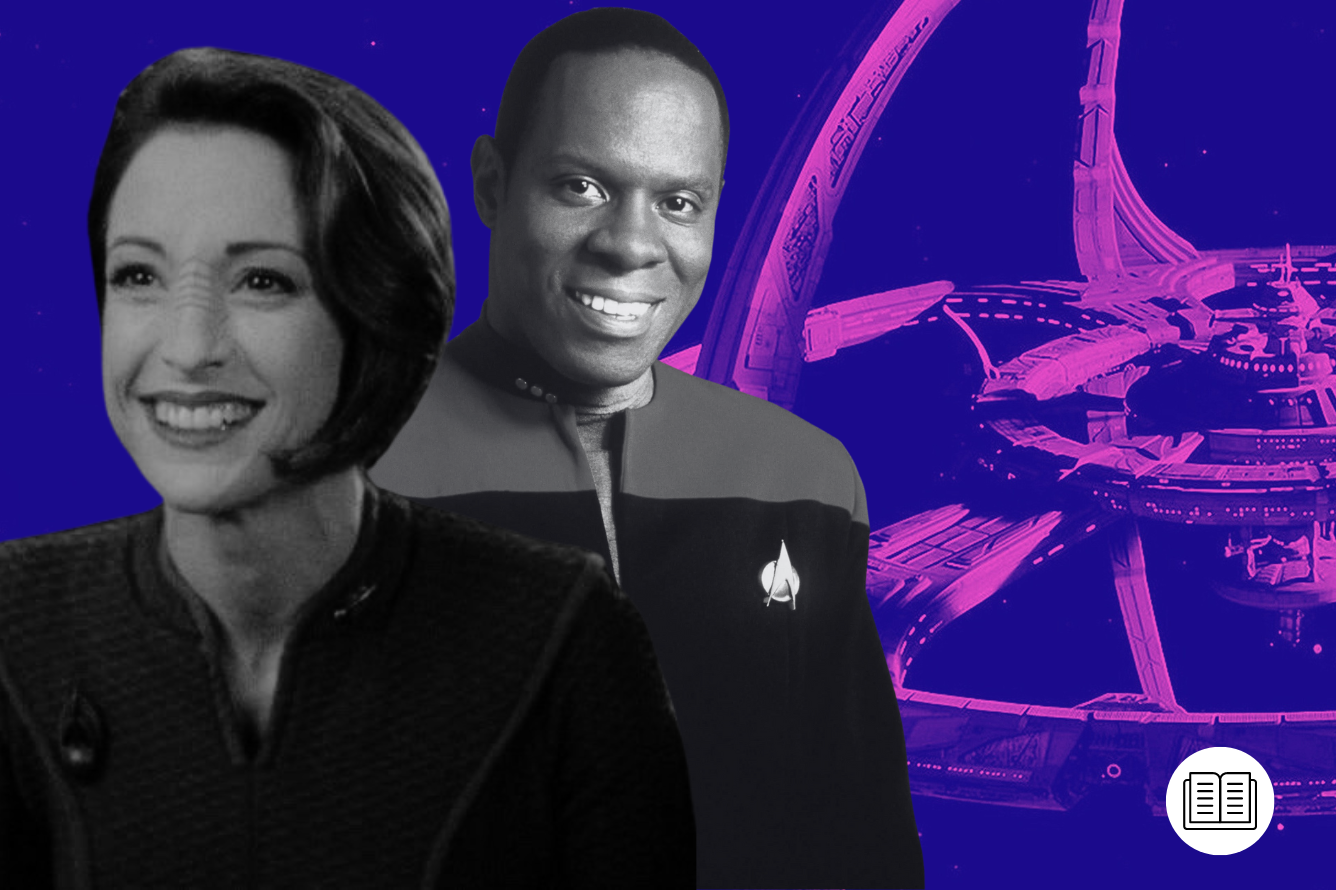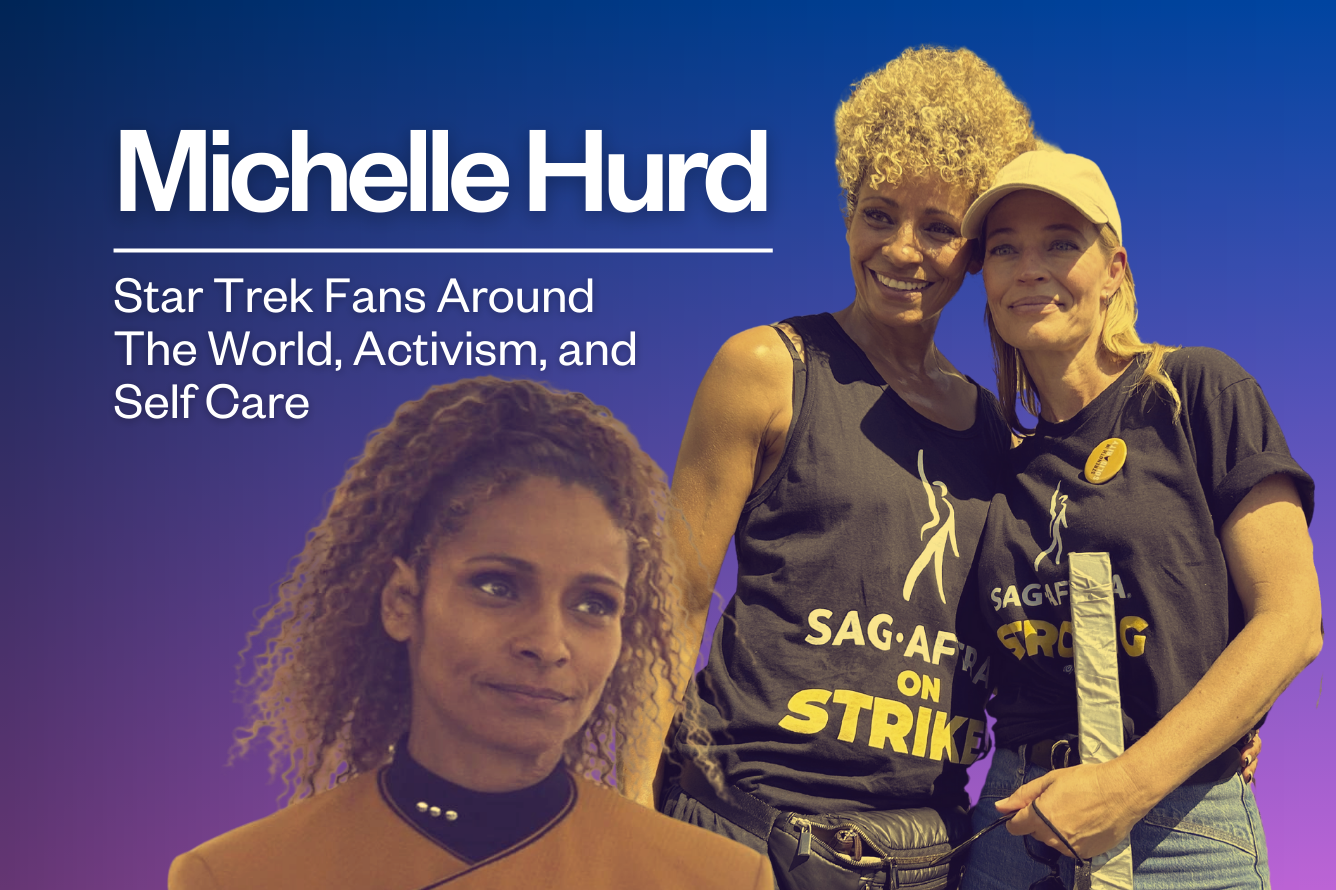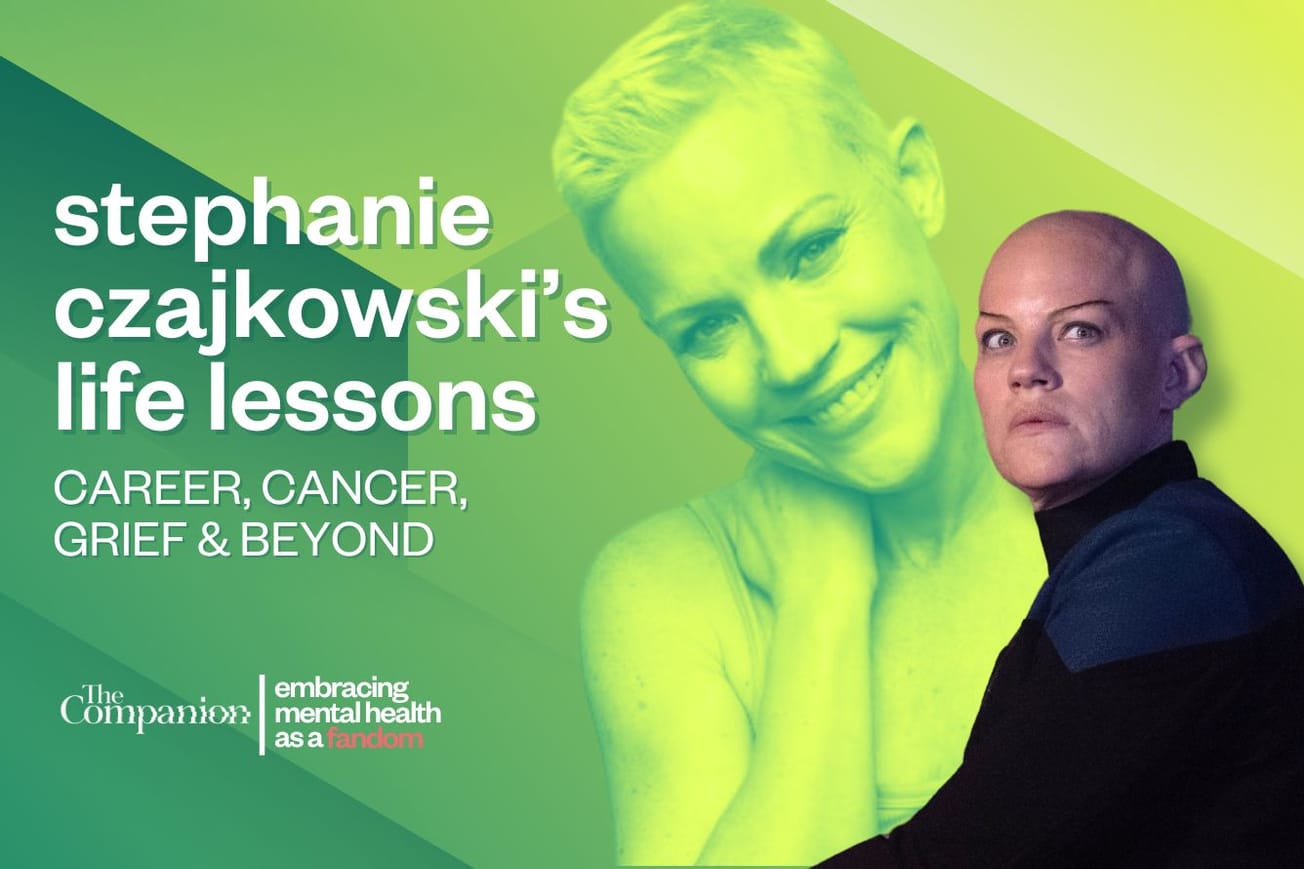Not too long ago, Star Trek: Deep Space Nine found its way – boldly, we imagine – to Netflix, where it found itself a whole new host of fans. Indeed, the series began trending on the platform last December, and it’s little wonder as to why.
Firstly, there’s the fact that DS9 takes on a serialized story as opposed to episodic one-shots, making the sci-fi hit far more compelling for binging than many of the other, more episodic Star Trek titles. Then, there’s the little matter of its cool 100 percent “fresh” rating on Rotten Tomatoes.
Personally, though, I think it’s the show’s hopepunk values that have helped power its resurgence as a must-watch series; we are living in dark times, after all. Indeed, considering the headlines we are being served on an almost daily basis – impending climate change disasters, endless wars, nuclear threats, the mere existence of Putin, the rise of right-wing extremism – ours might be the very darkest timeline of all.
Further Reading on Star Trek's Ideals
Prodigy Season 1 Part 2 Continues to Live Up to Starfleet’s Ideals - Star Trek: Prodigy's midseason premiere shows us just what it is that makes this universe so special through the eyes of its animated alien heroes.
Now, I know what you’re thinking; Star Trek: Deep Space Nine was never exactly sweetness and light. Quite the opposite, actually; it served up hardcore themes, sank its viewers deep into a world of war and trauma, pulled zero punches, and was never afraid to hurt the characters we’d fallen in love with – sometimes to the point of not just breaking them, but absolutely shattering them.
In the Grim Darkness of the Far Future, There is Only Worf
Don’t believe me? Well, cast your mind back to the time Kira Nerys (Nana Visitor) learned that the mother she idolized was actually Gul Dukat (Marc Alaimo)’s personal comfort woman (‘Wrongs Darker Than Death or Night’ – S6, Ep17) – a role of sexual servitude that saw her family provided with extra rations and medicines. Worse still? She discovered that Meru (Leslie Hope) fell in love with her captor – something which the righteous Kira just couldn’t fathom.
“Oh, is that what you tell yourself, that you’re doing it for the children? The clothes, the food, the easy living, that you’re doing it all for them? Are you that deluded? It’s not for them. It’s for you. You like it here. You enjoy playing house with that murderer. Don’t you see what you are? What you’ve allowed yourself to become? You’re a collaborator!”
Love should be a source of happiness – of respite from the darkness. And yet, when Dukat eventually tired of Kira’s mother, he dumped her at a hospital and had her infected with the Fontossa virus. Prompting, yes, her miserable and untimely death. Argh.

Not dark enough for you? How about, then, the time that everyone’s favorite tailor, Garak (Andrew Robinson), methodically tortured Odo (René Auberjonois) over the course of an entire episode (‘The Die is Cast’ – S3, Ep21)? Or the time Odo – the same man who can merrily turn into a hat or chair at a moment’s notice – sanctioned the execution of three innocent citizens (‘Things Past’ – S5, Ep8)? Or how about the Argrathian government’s decision to mentally manipulate Miles O’Brien (Colm Meaney) into believing he’s spent 20 years in prison, prompting him to transform overnight from our confident and capable Chief of Operations to a frightened shell of a man (‘Hard Time’ – S4, Ep19)? Or the brutal end to Dax (Terry Farrell) and Worf (Michael Dorn)’s unprecedentedly happy marriage (‘Tears of the Prophets’ – S6, Ep26)? Or The Dominion War? Or, you know, any of the other terrible dark happenings that occurred during DS9’s seven-season run?
It is seemingly endless misery; a tapestry of traumatic events woven together with yet more trauma. As Bashir (Alexander Siddig) notes in ‘The Forsaken’ (S1, Ep17):
“Nothing makes them happy! They are dedicated to being unhappy, and to spreading that unhappiness to others! They are the Ambassadors of Unhappy!”
Sure, he might not have been talking about his fellow crew members, but he may as well have been. This was the show that found its beginnings aboard USS Saratoga during Starfleet’s doomed conflict against the Borg at Wolf 359 (‘Emissary: Part 1’ – S1, Ep1). That introduced us to Captain Benjamin Sisko (Avery Brooks) as he watched his wife, Jennifer (Felecia M. Bell), perish before his eyes. That swaps the classic starship setting – one which allows our explorers to boldly go where no man had been before, all whilst eating delicious meals created via replication – for a tired old space station near the planet Bajor. A tired old space station, no less, that was recently liberated by the Bajorans from the fascist Cardassians in a guerrilla war. Seriously, could this show get any more grimdark?

Inspired by the tagline of the tabletop strategy game Warhammer 40,000, “In the grim darkness of the far future there is only war,” grimdark refers to those dystopian futures that offer up hearty helpings of violence, peril, and generally amoral doings. Think the pervasively gritty world of Christopher Nolan’s Batman movies, or the horrors of The Walking Dead, or even the nihilistic worldview set out by the Game of Thrones franchise, if you’d like an example of grimdark at work.
Further Reading on the Style of the Snyder-verse
The Momentous Staying Power of Zack Snyder’s Films - For all critics sneer, Zack Snyder creates powerful films that leave a lasting impact thanks to a simple mantra: “Have fun but don’t make fun.”
Hopepunk versus Grimdark on DS9
And yet… well, despite appearances, Star Trek: Deep Space Nine isn’t grimdark. Not really. In fact, its true nature sits on the other side of the grimdark coin.
“The opposite of grimdark is hopepunk,” Alexandra Rowland, a Massachusetts writer, shared via a Tumblr post back in July 2017. And, while Rowland wasn’t specifically talking about DS9, they might as well have been. Because the characters we meet in this show exemplify the “keep fighting, no matter what” mantra that marries so well with the hopepunk genre.
Our resolute Starfleet officers might not realize it, but by taking over the Deep Space Nine space station, they truly are going where no Trekkian has gone before them; headfirst into a world of crap and compromise. They don’t have replicators to fix them up a gourmet meal; they don’t have lofty goals and ideals to cling to; they don’t have any exciting new life and new civilizations to seek out; they don’t have the glamour of life aboard Enterprise; hell, they don’t even have a school system in place until Keiko (Rosalind Chao) rolls up her sleeves and sets one up herself (‘A Man Alone’ – S1, Ep4).

What they have, it seems, is a thankless task: to keep the shaky peace on DS9 from crumbling apart – a mission that becomes all the more difficult when it’s revealed that they happen to be sitting on the most important cross-section in the galaxy (yes, I’m referring to the transgalactic wormhole that brings the depths of outer space to us, rather than the other way around. How could I not be?).
So far, so grimdark. Especially when you consider our cast of characters; the morally bankrupt unreformed spy Garak, the surly “shades of grey” Odo, the hot-tempered and uncompromising Kira, the greedy and manipulative Quark (Armin Shimerman), the beleaguered, and occasionally bigoted O’Brien, and the disillusioned Sisko… even the bright-eyed and bushy-tailed Bashir can trip into arrogance and overconfidence, whilst the worldly-wise Dax has several lifetimes of baggage.
The list goes on and on, but you get the picture. There are no Picard-esque heroes here, nor wide-eyed Jonathan Archers. The DS9 crew is, to coin a phrase from Louisa Alcott’s Little Women (1868), hopelessly flawed; they are not the elite that we have come to expect from Starfleet – and that becomes clearer and clearer as their inner demons and traumas are laid bare for all to see.
But here’s the thing; it’s easy to be optimistic and hopeful – to stand up for what’s right – when you’re living an unchallenged existence. It’s easy to believe the best of people when you have only ever been shown the very best of people. It’s not exactly radical to be fearless when… well, when you have nothing to fear. And what of goodness? Well, as Quark explains to Nog (Aron Eisenberg), humans can – and will – become “as nasty and as violent as the most bloodthirsty Klingon” when deprived of their creature comforts (‘The Siege of AR-558’ – S7, Ep8).

Essentially, there are no good and bad people; even those we assume to be the very best of us can regress to horrible acts when under duress – and we see this firsthand when Sisko adopts some seriously questionable tactics during his tenure as that rickety old space station’s reluctant commander.
But here’s the thing about that; all of this means that the DS9 crew is, much like all of us out here in the real world, struggling. They’re struggling to comprehend the atrocities of war, the hardships of life, and the wrongdoings of others. They know firsthand that putting goodness out into the universe does not necessarily mean you will receive any in return. That hard work, day in and day out, does not reap instant rewards. That staying positive doesn’t stop things from feeling bleak or even hopeless. That even the very best among us can and will make mistakes – because there’s no such thing as an intrinsically good person. We are, all of us, forever living on the knife-edge of morality, one foot in darkness and the other in light. Every choice we make has the potential to send us in either direction.
Even contending with all of the above, though, the DS9 crew keeps on striving to be better – either in spite of their painful state of self-awareness or because of it. And, while they work hard at that aforementioned thankless task (because, hey, it’s a living and it presumably pays the bills), they work even harder at the relationships they forge with those around them. At listening. At looking forwards. At actively choosing to remain hopeful. And, to quote (sorry not sorry) Frozen II (2019)’s Anna (Kirsten Bell), at doing the next right thing.
“You are lost, hope is gone
But you must go on
And do the next right thing.”
Who’d have ever thought that DS9 and Disney’s sparkliest animated film would have something in common, eh?
Further Reading on Deep Space Nine
Deep Space Nine’s ‘Civil Defense’: Hauntings, Cardassians, and Metaphor - Despite its troubled production history, ‘escape room’ episode ‘Civil Defense’ lays bare the conflict at the heart of Star Trek: Deep Space Nine.
Deep Space Nine is All About Light in the Dark
Parallel princesses aside, herein lies the secret to DS9’s success; it offers up a dark mirror, true, but there is light to be found within if only we search for it. Because let’s face it, Sisko’s troubled crew beautifully exemplifies the ways in which we can apply the core principles of hopepunk to our own lives.
“Hopepunk says that genuinely and sincerely caring about something, anything, requires bravery and strength,” Rowland explained in a follow-up to that same Tumblr post all those years ago.
“Hopepunk isn’t ever about submission or acceptance: It’s about standing up and fighting for what you believe in. It’s about standing up for other people. It’s about DEMANDING a better, kinder world, and truly believing that we can get there if we care about each other as hard as we possibly can, with every drop of power in our little hearts.”
Doesn’t that just scream Star Trek: Deep Space Nine to you? Because everyone aboard that space station – from Sisko to Odo – believes in SOMETHING. For some, it’s a desire to make this deprived corner of the galaxy a better place – or, at the very least, leave it in a better state than in which they found it. For others…
Well, perhaps O’Brien put it best ‘Tribunal’ (S2, Ep25):
“I’ve been in service to the Federation… Starfleet… all my adult life. No one has ever questioned my loyalty. No one… in my entire life has ever had cause to ask: ‘Miles O’Brien, are you a criminal?’
“I took an oath to defend the Federation and what it stands for. I don’t steal from them. I don’t lie to them.
“I’m no angel, but I try to live every day as the best human being I know how to be. I need my little girl to wake up in the morning and look up at me and see a man she can respect.”
The DS9 crew, for the most part, try to live every day as the best Human (or Bajoran, or Klingon, or Trill, or… you get the picture) that they can be. Yes, sometimes it’s hard. Yes, sometimes they stumble – or fail entirely. And yes, sometimes their “right thing” is someone else’s “hell no”. Still, though, the intention is there. They care. And, as the dramas of their interpersonal relationships play out across the show’s seven-season arc, they begin to care about each other, too. We watch them fall in love, grieve, argue, emotionally wound, and apologize for the wrongs they have done to one another. We watch them forge fiercely loyal friendships and seek one another’s approval. We watch them turn to one another for support. And, most importantly of all, we watch as they slowly find meaning and fulfillment in one another, in all manner of ways.
Now, there’s no denying that the other Trek titles are a lot of fun – but Star Trek: Deep Space Nine is the giddily addictive hopepunk we all need in 2022. Because, while their adventures play out in the depths of space, their achievements are not out of reach for those of us still here on earth. Our pain and our flaws do not determine our fate; our everyday choices do. And so we don’t need to exist among the stars or be the very best; we simply need to strive to do better by those around us. Because, even in the darkest times, when we care about one another, we can make truly wonderful things happen.
This article was first published on April 7th, 2022 on the original Companion website.
Further Reading on All Topics
- Prodigy Season 1 Part 2 Continues to Live Up to Starfleet’s Ideals - Star Trek: Prodigy's midseason premiere shows us just what it is that makes this universe so special through the eyes of its animated alien heroes.
- The Momentous Staying Power of Zack Snyder’s Films - For all critics sneer, Zack Snyder creates powerful films that leave a lasting impact thanks to a simple mantra: “Have fun but don’t make fun.”
- Deep Space Nine’s ‘Civil Defense’: Hauntings, Cardassians, and Metaphor - Despite its troubled production history, ‘escape room’ episode ‘Civil Defense’ lays bare the conflict at the heart of Star Trek: Deep Space Nine.
- A History of Starfleet Uniforms From Fashion Disasters to Gender Equality - Whether miniskirts and calf-high boots or spandex and shoulder pads, Star Trek uniforms have always kept one eye on today’s fashion as well as tomorrow’s.
- Star Trek | Jonathan Frakes Defends Discovery - Jonathan Frakes talks Star Trek: Discovery’s trolls, the brilliance of Blu del Barrio, and leading by example in our new video series, To Boldly Ask...
The cost of your membership has allowed us to mentor new writers and allowed us to reflect the diversity of voices within fandom. None of this is possible without you. Thank you. 🙂










